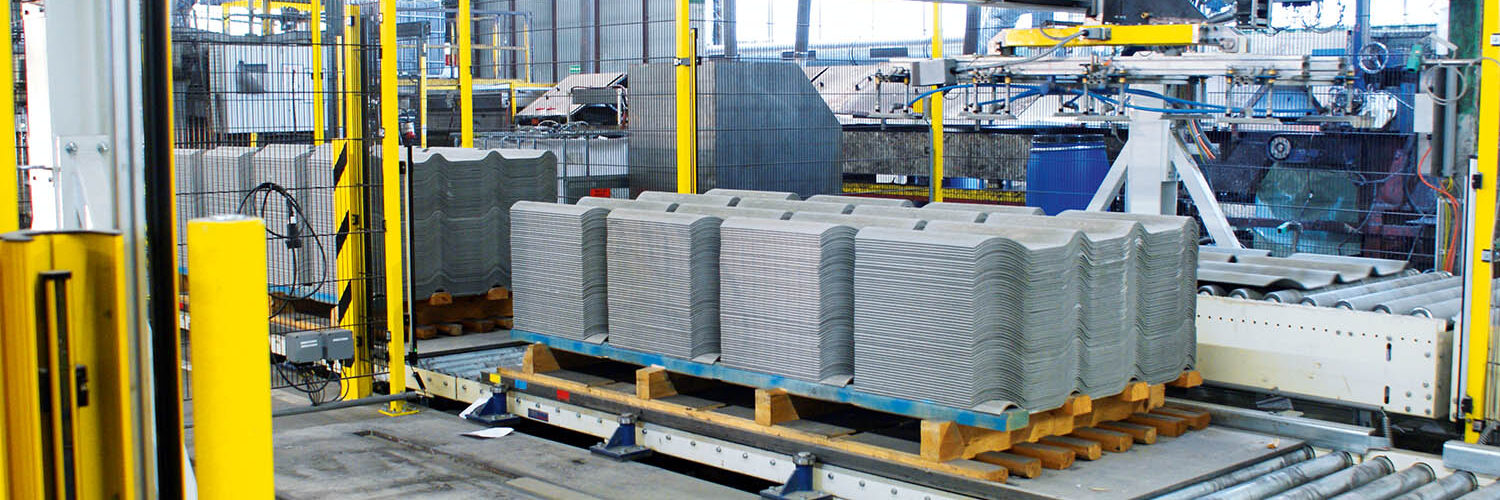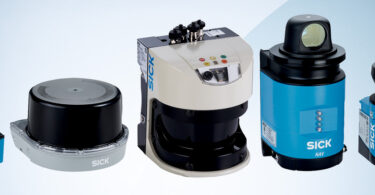Austrian Fiber Cement Products Manufacturer Seeks Risk Assessments from SICK
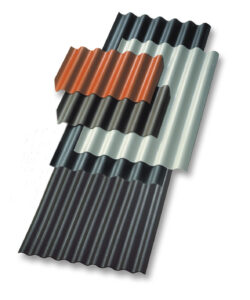
Corrugated panel from Eternit
With complex regulations, demanding technical implementation, and meticulous documentation, machine safety can be a real challenge. Many top machine builders rely on collaboration with external partners to achieve necessary safety. The in-house mechanical engineering department of Eternit in Austria brought the experts from SICK on board for their recently completed loading station.
Eternit is known worldwide for its extremely durable but lightweight panel solutions for roofs and facades. This success story began over 125 years ago in Vöcklabruck in Upper Austria. Starting in 1894, Ludwig Hatschek researched a revolutionary building material that would be lighter than brick, cheaper than slate, and better than sheet metal. The result was a special combination of fibers, cement, pulp, air and water that helped him achieve a breakthrough in 1900. He named this world's first industrially produced building material “Eternit,” derived from the Latin “aeternus,” meaning “eternal.”
Thanks to its special constructional properties like frost resistance, fire resistance, and lightweight, Eternit quickly gained in popularity. The Expo Pavilion in New York by Gustav Peichl, the church at Steinhof in Vienna by Otto Wagner, the Ortsstockhaus in Braunwald by Hans Leuzinger, and the Maison Blanche in La Chaux-de-Fonds by Le Corbusier are just a few examples of Eternit’s architectural might. All products of the manufacturer have been asbestos-free since 1993 and are made of 100% natural materials. In addition to roofing and facade panels, Eternit now also produces furniture, flooring, accessories, and plant pots based on the versatile fiber cement.
Safety for human-machine interaction with production processes
A glance at the production area shows that there is a lot going on at Eternit. A wide variety of panels can be seen on large machines. Forklifts are constantly bringing in huge pallets of new panels or taking them away. Speed is essential here, and the interaction between man and machine must also work perfectly. Safety is therefore a top priority at Eternit. This also applies to the new loading station, which handles and transports the semi-finished panels upstream of the drying and coating line.
The panels are fed to the system by forklifts lying on pallets. These pallets travel on a roller conveyor to the loading station, where a linear unit equipped with vacuum suction cups takes the panels from the stack and deposits them on a transport track. Then the panels travel individually on several roller conveyors and a belt conveyor towards the dryer. Everything is flawlessly coordinated, everything runs perfectly in sync. And everything is getting faster and faster. This also made it necessary to build a new loading station, as the old system was already getting on in years and no longer met current requirements in terms of speed and reliability.
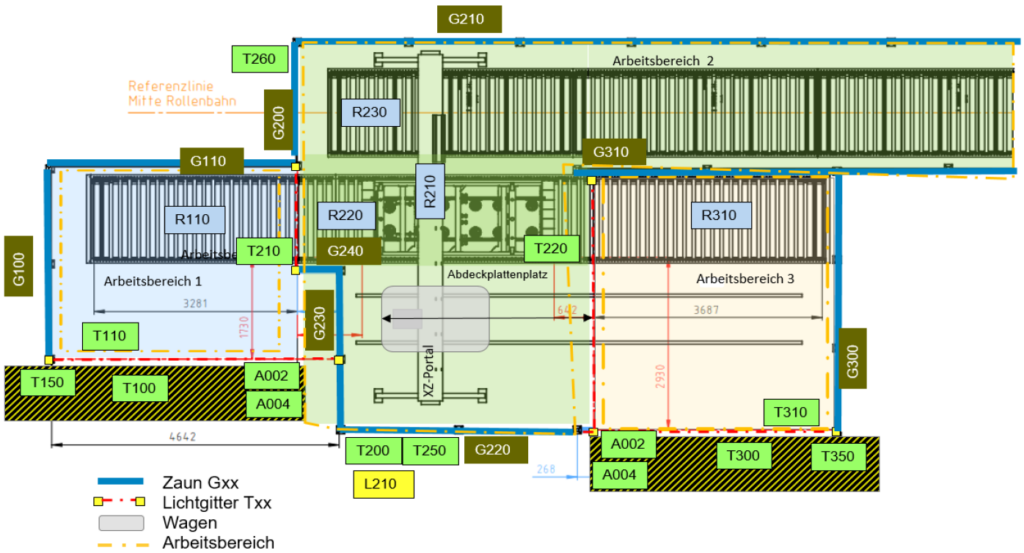
Graphical representation of the safety concept developed by SICK.
The long road to comprehensive machine safety
Machine safety was a key issue for the new loading station. In order to really play it safe, the company decided to work closely with SICK.
“Machine safety services from SICK provided us with valuable, external safety know-how and additional expertise for protecting the new system,” said Roman Felbinger, Maintenance Planning, Eternit. “We put together an individual service package from the modular range of services that perfectly met our requirements.”
The risk assessment, the creation of the safety concept, the safety design for hardware and software, the installation, the commissioning and the final verification and validation of the measures taken – these are the basic milestones for safe machines.
“The road to comprehensive machine safety is long. In addition, employees need training, and after a certain time you have to ask: ‘Is my machine still safe?’ In addition, regulations or standards may change or new technical solutions may be better or more efficient – this is simply too much for designers and mechanical engineers to handle on a day-to-day basis,” said Martin Wimmer, certified expert for machine safety at SICK. “They bring with them a wealth of application-specific expertise – staying on the ball is extremely demanding. It is nearly impossible for non-experts to deal with the topic of safety technology in depth on an ongoing basis. That's why we launched SICK Machine Safety Services, where we provide manufacturer-independent advice, guidance, and support.”
Perfect teamwork for the safety solution
Dietmar Futterknecht, who is responsible for electrical and automation engineering at Eternit, and his colleagues took care of determining the functions of the loading station as well as risk assessment and evaluation in collaboration with SICK. Then the experts from SICK created the safety concept and, in the next step, completed the first part of the safety design by selecting the safety-related parts of the controller (SRP/CS – safety-related parts of control system).
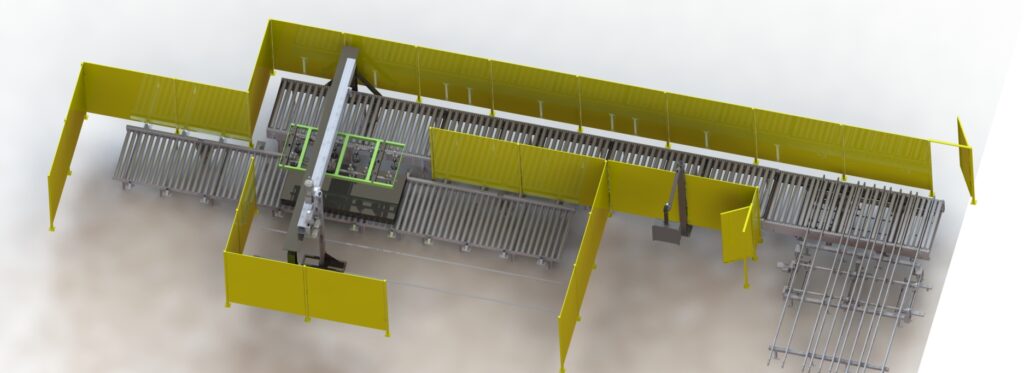
Rendering of the system
Then it was again time for the specialists from Eternit to take charge. The team ensured the integration of the SRP/CS into the hardware of the control and the design of the safety-related user software. Installation of the protective devices and commissioning of the safety functions were also the responsibility of Eternit. Then SICK again took the reins for the final check within the scope of verification and validation. This seamless interaction resulted in an completely sophisticated safety solution.
“The machine and its environment were extremely time-critical. We run at high speed here. Of course, this also placed high demands on the feeding of the panels and, consequently, on the safety concept and its implementation in a very confined space,” Futterknecht said. “This is because space was limited and the forklifts need enough clearance to move with the large pallets. That's why we wanted to have someone on board at the loading station who deals intensively with the topic of machine safety on an ongoing basis. With SICK, we found the perfect partner who accompanied us step by step whenever we needed them.”
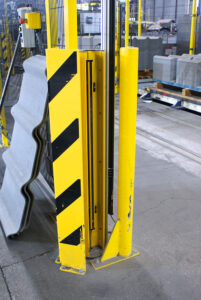
The area where the forklift places the pallets on a roller conveyor is protected by deTec safety light curtains
Critical areas: Forklifts and pallets
The area where the forklift approaches and places the pallets on a roller conveyor is protected by a deTec safety light curtain. If a forklift enters the protected area, the system section is safely switched off. If the forklift leaves this area again, the driver acknowledges the activation using a wire rope hoist crane. The same applies to the area on the other side of the line where the empty pallets are removed by forklifts. Another safety circuit protects the gantry with the linear unit or persons who may be in its vicinity. The TR110 Lock provides a safety locking function for the grid doors of the loading station.
The Flexi Soft safety controller also comes from SICK. It is freely programmable and can be modularly adapted to the respective requirements. It also has intuitive configuration software with extensive functions for easy engineering and the output of documentation or wiring diagrams. The main module diagnostics interfaces and the configuration memory in the system plug enable rapid commissioning and troubleshooting. The Flexi Soft was programmed by the Eternit team. SICK was responsible for monitoring fulfillment of the required safety standards.
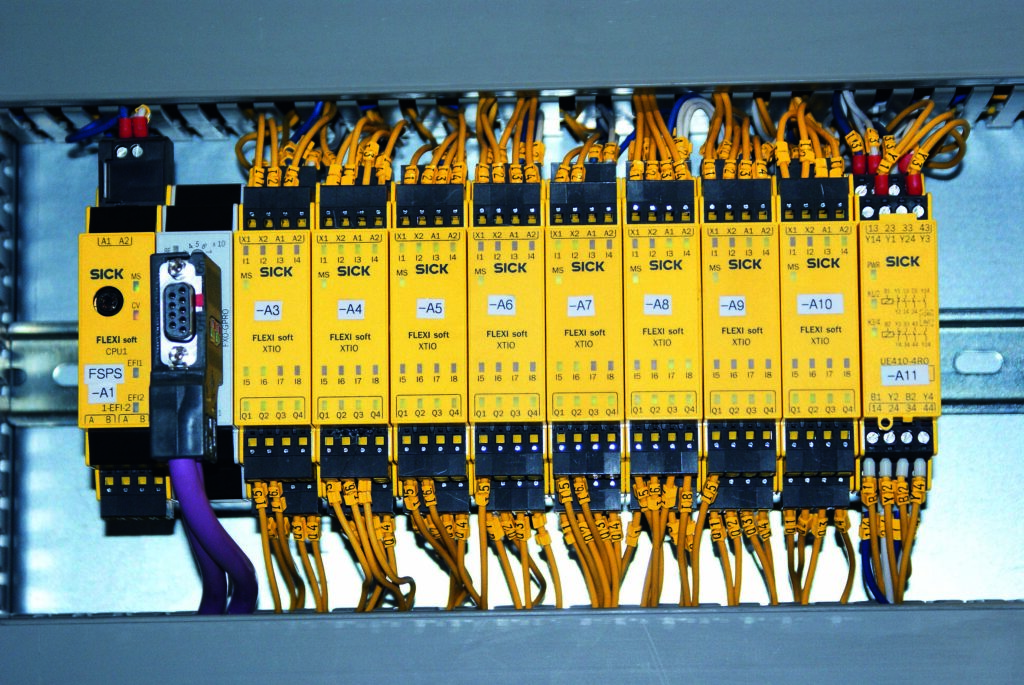
The Flexi Soft safety controller from SICK is freely programmable and can be modularly adapted to the respective requirements.
Of course, the key issue of maintenance was also considered as part of the safety concept.
“Accessibility and fast repair, especially when it comes to the drives, were essential for us. We have therefore installed several E100 enabling switches, which allow us to perform selective maintenance operation,” said Roman Felbinger, Maintenance Planning, Eternit. “It was also important for us to work as much as possible with safety components that we had already been using. Because that makes it easier for us to keep stock. Thanks to good planning, we were able to make it all happen.”
Safety for everyone involved
Modular machine safety service from SICK enables customers to concentrate on their core competence – mechanical engineering – while still optimally fulfilling all safety requirements, including documentation. This creates security for all involved.
“We took machine safety into account back during planning and design and involved the experts from SICK at an early stage,” Futterknecht said. “This definitely paid off and the result is impressive. The first expansion of the system sis already being considered, and SICK will certainly be there again from the start.”
Want to learn more about this application? Contact a SICK representative today!


